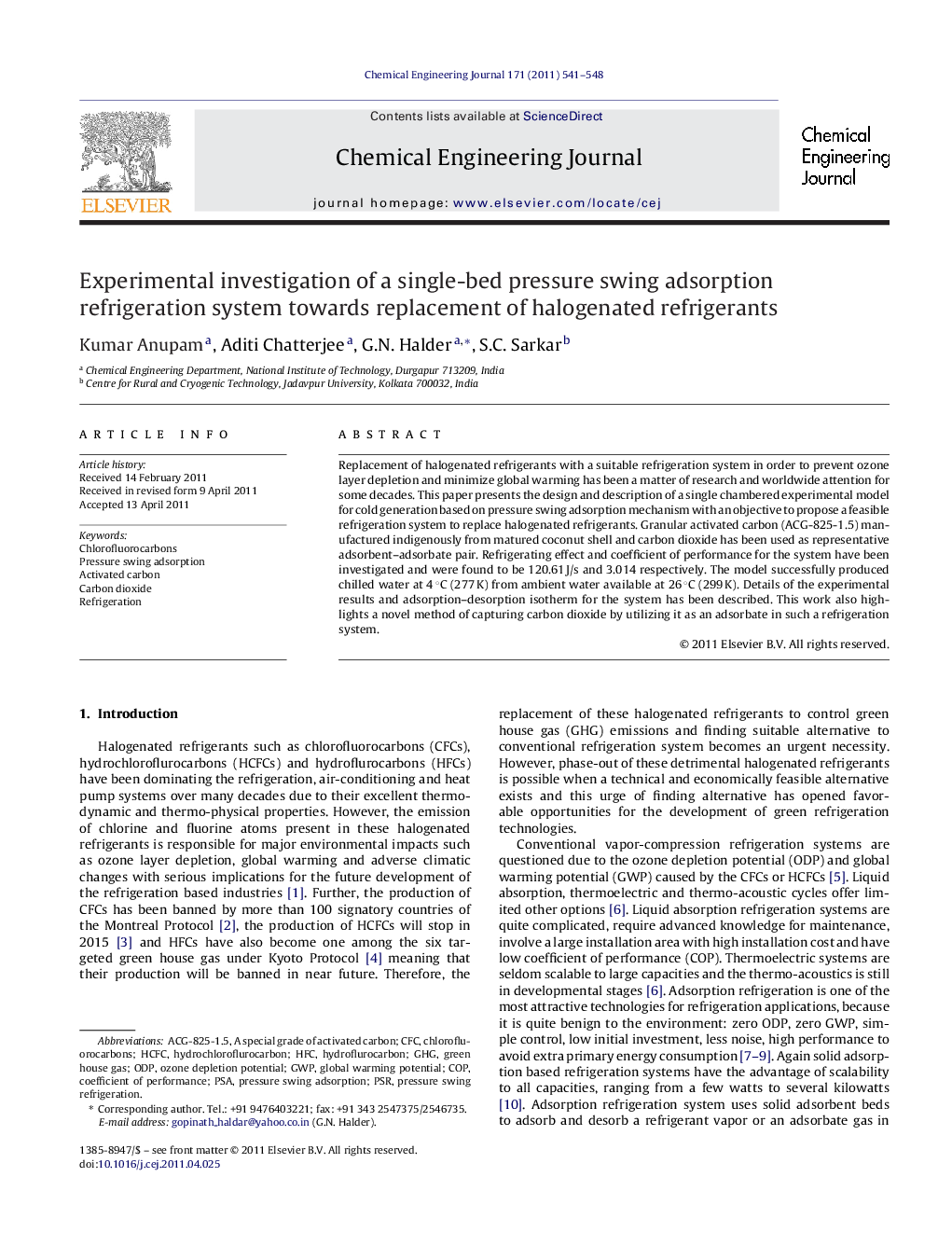| Article ID | Journal | Published Year | Pages | File Type |
|---|---|---|---|---|
| 150608 | Chemical Engineering Journal | 2011 | 8 Pages |
Replacement of halogenated refrigerants with a suitable refrigeration system in order to prevent ozone layer depletion and minimize global warming has been a matter of research and worldwide attention for some decades. This paper presents the design and description of a single chambered experimental model for cold generation based on pressure swing adsorption mechanism with an objective to propose a feasible refrigeration system to replace halogenated refrigerants. Granular activated carbon (ACG-825-1.5) manufactured indigenously from matured coconut shell and carbon dioxide has been used as representative adsorbent–adsorbate pair. Refrigerating effect and coefficient of performance for the system have been investigated and were found to be 120.61 J/s and 3.014 respectively. The model successfully produced chilled water at 4 °C (277 K) from ambient water available at 26 °C (299 K). Details of the experimental results and adsorption–desorption isotherm for the system has been described. This work also highlights a novel method of capturing carbon dioxide by utilizing it as an adsorbate in such a refrigeration system.
